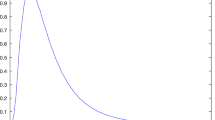Abstract
In different methods of Biometrics, recognition by iris images in recent years has been taken into consideration by researchers as one of the common methods of identification like passwords, credit cards or keys. Iris recognition a new biometric technology has great advantages such as variability, stability and security. In this paper we propose a new feature extraction method for iris recognition based on contourlet transform. Contourlet transform captures the intrinsic geometrical structures of iris image. It decomposes the iris image into a set of directional sub-bands with texture details captured in different orientations at various scales so for reducing the feature vector dimensions we use the method for extract only significant bit and information from normalized iris images. In this method we ignore fragile bits. At last the feature vector is approximated by non linear approximation coefficient. Experimental results show that the proposed method reduces processing time and increase the classification accuracy and outperforms the wavelet based method.
Preview
Unable to display preview. Download preview PDF.
Similar content being viewed by others
References
Daugman, J.: High confidence visual recognition of persons by a test of statistical independence. IEEE Transactions on Pattern Analysis and Machine Intelligence 15(11), 1148–1160 (1993)
Daugman, J.: How Iris Recognition works. IEEE Transactions on Circuits and systems for video Technology 14(1), 21–30 (2004)
Wildes, R.P., et al.: A machine-vision system for iris recognition. In: Machine Vision and Applications. Springer, Heidelberg (1996)
Sun, Z.N., Wang, Y.H., Tan, T., Cui, J.: Improving Iris Recognition Accuracy Via Cascaded Classifier. IEEE Transactions on systems, Man and Cybernetics-part C: Applications reviews 35(3) (2008)
Boles, W.W., Boashash, B.: A Human Identification Technique Using Images of the Iris and Wavelet Transform. IEEE Trans. Signal Processing 46(4), 1185–1188 (1998)
Sanchez-Avila, C., et al.: Iris-based Biometric Recognition Using Dyadic Wavelet Transform. IEEE Aerospace and Electronics Systems Magazine 17(10), 3–6 (2002)
De Martin-Roche, D., Sanchez-Avila, C., Sanchez-Reillo, R.: Iris recognition for biometric identification using dyadic wavelet transform zero crossing. In: Security Technology, 2001 IEEE Int. Carnahan Conference, pp. 272–277 (2001)
Ma, L., Tan, T., Wang, Y., Zhang, D.: Personal identification based on iris texture analysis. IEEE Trans. On Pattern Analysis and Machine Intelligence 25(12), 1519–1533 (2003)
Zhu, Y., Tan, T., Wang, Y.: Biometric Personal Identification Based on Iris Patterns. Pattern Recognition 2, 801–805 (2000)
Ma, L., Wang, Y., Tan, T.: Iris Recognition Based on Multichannel Gabor Filtering. In: Proc. Fifth Asian Conf. Computer Vision, vol. 1, pp. 279–283 (2002)
Ali, J.M.H., Hussanien, A.E.: An Iris Recognition System to Enhance E-security Environment Based on Wavelet Theory. In: AMO - Advanced Modeling and Optimization, vol. 5(2) (2003)
Do, M.N., Vetterli, M.: The contourlet transform: An efficient directional multiresolution image representation. In: IEEE Trans. Image Proc. (2005)
Burt, P.J., Adelson, E.H.: The Laplacian pyramid as a compact image code. IEEE Trans. Commun. 31(4), 532–540 (1983)
Bamberger, R.H., Smith, M.J.T.: A filter bank for the directional decomposition of images: Theory and design. IEEE Trans. Signal Proc. 40(4), 882–893 (1992)
Hollingsworth, K.P., et al.: The Best Bits in an Iris Code. IEEE Transactions on Pattern Analysis and Machine Intelligence (PAMI) 31(6), 964–973 (2008)
Contourlet Toolbox (version 2.0) (November 2003), http://www.ifp.uiuc.edu/~minhdo/software/
Chinese Academy of Sciences – Institute of Automation. Database of 756 Grayscale Eye Images. Version 1.0 (2003), http://www.sinobiometrics.com
Author information
Authors and Affiliations
Editor information
Editors and Affiliations
Rights and permissions
Copyright information
© 2009 Springer-Verlag Berlin Heidelberg
About this paper
Cite this paper
Azizi, A., Pourreza, H.R. (2009). A New Method for Iris Recognition Based on Contourlet Transform and Non Linear Approximation Coefficients. In: Huang, DS., Jo, KH., Lee, HH., Kang, HJ., Bevilacqua, V. (eds) Emerging Intelligent Computing Technology and Applications. ICIC 2009. Lecture Notes in Computer Science, vol 5754. Springer, Berlin, Heidelberg. https://doi.org/10.1007/978-3-642-04070-2_35
Download citation
DOI: https://doi.org/10.1007/978-3-642-04070-2_35
Publisher Name: Springer, Berlin, Heidelberg
Print ISBN: 978-3-642-04069-6
Online ISBN: 978-3-642-04070-2
eBook Packages: Computer ScienceComputer Science (R0)




